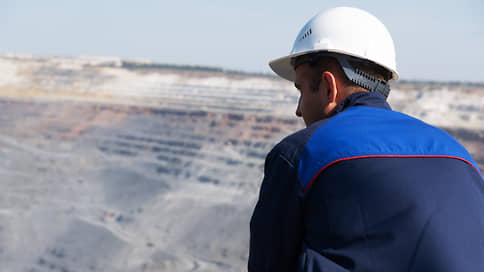In 2023, no deposits of rare metals were found in Russia
[ad_1]

This year, not a single new deposit of rare metals was discovered in Russia, which includes strategic raw materials such as lithium, vanadium, molybdenum and rare earth elements. Although significant tax incentives have already been given for the development of such deposits, large capital costs and unclear demand prospects limit the circle of interested parties virtually only to state-owned companies. According to experts, a quick way to increase investment activity would be to introduce the practice of purchasing rare metals into the state reserve.
No new deposits of rare metals were discovered in 2023, the Ministry of Natural Resources told Kommersant. In total, there are currently 50 licenses for geological exploration of these minerals in the country.
Rare metals are a collection of about 60 elements, which include, for example, lithium, vanadium, molybdenum and tungsten, as well as rare earth metals (REMs; 17 elements, including lanthanides, scandium and yttrium). They are used in a wide range of industries, from electric vehicles to wind turbines and aerospace.
Conducting geological exploration to search for rare and rare earth metals is included in the “road map” of the development strategy of the metallurgical industry. The Ministry of Natural Resources proposed to allocate 88 billion rubles from the budget in 2024–2026. to conduct geological exploration with an emphasis on strategic types of metals. “The main tasks that will be solved in subsoil use are, firstly, we are shifting geological exploration to strategic types of raw materials (lithium, titanium, manganese, niobium and rare earth metals),” said the head of the ministry, Alexander Kozlov, in the State Duma on October 11.
According to the Ministry of Industry and Trade, there is a significant shortage of lithium in Russia – in 2021, imports of alkali metals amounted to 2.9 thousand tons. According to the Ministry of Natural Resources, the development of rare metal deposits is characterized by low economic efficiency due to large capital investments in the early stages. In addition, there are no industrially proven technologies for processing raw materials, and the deposits are remote from infrastructure facilities.
Companies developing rare metal deposits have been given significant tax benefits: the mineral extraction tax has been reduced from 8% to 4.8%, while in the first ten years of development the base rate is reduced tenfold. However, the Ministry of Natural Resources believes that the main incentive for the development of deposits should be a significant expansion of domestic demand for rare metals. So far, the ministry is distributing mining licenses for already explored deposits: this year, the country’s largest lithium deposits, Kolmozerskoye and Polmostundrovskoye in the Murmansk region, were awarded to a joint venture between Rosatom and Norilsk Nickel, and Tastygskoye in Tuva was awarded to Rostec. The Zavitinskoye lithium deposit in the Trans-Baikal Territory is planned to be licensed by the end of the year.
Rare metals are mainly consumed as alloys for rolled metal products or as components of electronic devices, says independent industrial expert Maxim Shaposhnikov. It is difficult to quickly increase production by simply injecting funds into these industries. “A quick solution could be an offset contract with Rosrezerv to purchase rare metals from mining businesses at market prices, which would allow them not to fear the risks of insufficient demand,” he notes. A similar idea is already contained in the “road map” for the implementation of the metallurgy development strategy, but until now the Ministry of Finance has opposed the purchase of any new categories of raw materials from Rosrezerv.
[ad_2]
Source link





